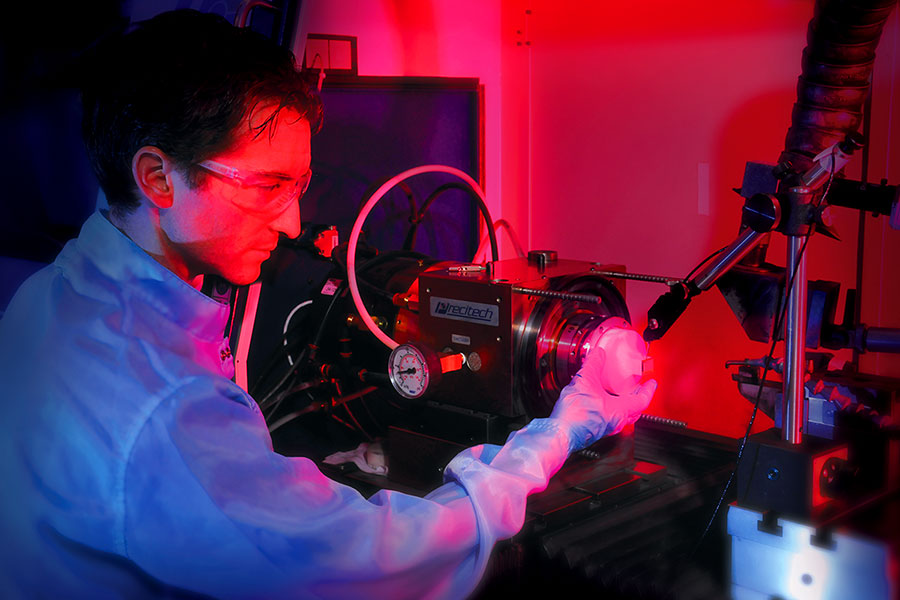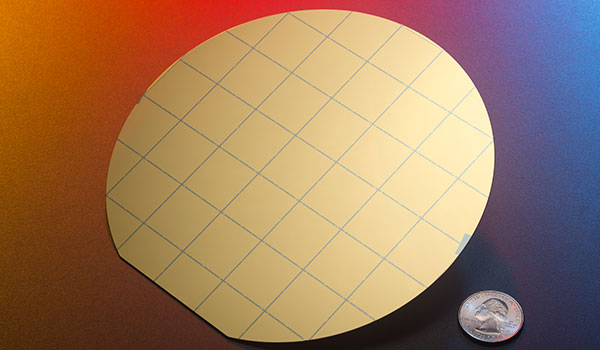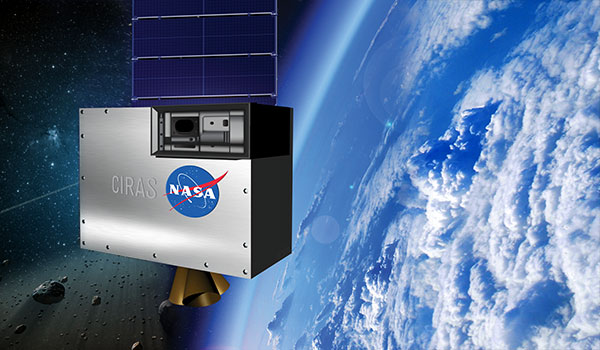Above:
Cory Hill prepares to remove the substrate of a BIRD FPA using the diamond point turning process
HOT BIRDs
Seeing IR in the Heat
Sarath Gunapala - David Ting - Alexander Soibel
There is a need to develop a new generation of high-performance, cost-effective infrared photodetectors and focal plane arrays (FPAs) with the flexibility to meet a variety of application requirements. Operation at higher temperatures than before is very advantageous and has led to the development of High Operating Temperature (HOT) Barrier Infrared Detectors (BIRDS).
Mercury Cadmium Telluride, also known as HgCdTe or MCT, is the most successful high-performance infrared detector material to date, offering continuous adjustability in cutoff wavelengths (the longest wavelength of electromagnetic radiation that can be detected effectively) ranging from the short-wavelength infrared (SWIR) to the very long wavelength infrared (VLWIR), making it suitable for a wide range of applications. The challenges associated with MCT are that it is soft and brittle and therefore requires extreme care in growth, fabrication, and storage.
As a result, large-format MCT focal plane arrays tend to be very costly. Focal plane arrays based on traditional bulk III-V semiconductors such as indium gallium arsenide (InGaAs) and indium antimonide (InSb) have excelled in operability, spatial uniformity, temporal stability, scalability, producibility, and affordability, but they lack the versatility in cutoff wavelength adjustability.
HOT BIRD is a breakthrough infrared detector technology capable of operating at 150K with spectral coverage of not only the entire mid-wavelength infrared (MWIR) atmospheric transmission window (3–5 µm), but also the SWIR, 1.4–3 µm, and the near infrared (NIR, 0.75–1.4 µm) with very high quantum efficiency. The HOT BIRD focal plane array is at the heart of the Cubesat Infrared Sounder (CIRAS) and Hyperspectral Thermal Imager (HyTI) 6U CubeSat (which has
a cooler, also developed in MDL
) that was recently selected by NASA’s In-Space Validation of Earth Science Technologies (InVEST) program.
Twenty-five 2Kx2K HOT BIRD detector arrays on a 6-inch GaSb wafer.
+ Larger image
Two megapixel and one VGA, 1Kx1K focal planes 20 and 30 microns pixel pitch
+ Larger image
Artist rendering of Cubesat Infrared Atmospheric Sounder (CIRAS) based on MWIR HOT-BIRD focal plane array.
+ Larger image
Long-wavelength infrared (11 microns cutoff) image taken with a JPL fabricated HDTV format HOT BIRD focal plane array operating at 80K.
+ Larger image





